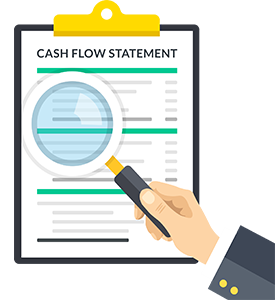The best way to weather a storm is often by being prepared before the storm hits. In the case of small businesses, this means building a fortress balance sheet.
What is a fortress balance sheet?
 This long-standing idea means taking steps to make your balance sheet shockproof by building liquidity. Like a frontier outpost or an ancient walled city, businesses that prepare for a siege—in the form of a recession, natural disaster, pandemic, or adverse regulatory change—can often hold out until the crisis passes or the cavalry arrives.
This long-standing idea means taking steps to make your balance sheet shockproof by building liquidity. Like a frontier outpost or an ancient walled city, businesses that prepare for a siege—in the form of a recession, natural disaster, pandemic, or adverse regulatory change—can often hold out until the crisis passes or the cavalry arrives.
Consider these suggestions for building your own fortress balance sheet.
- Control inventory and receivables. These two asset accounts often directly impact cash reserves. For example, carrying excess inventories can deplete cash because the company must continue to insure, store, and manage items that aren’t generating a profit. Also take a hard look at customer payment trends. Clients who are behind on payments can squeeze a firm’s cash flow quickly, especially if they purchase significant levels of goods and services—and then fail to pay.
- Keep a tight rein on debt. In general, a company should use debt financing for capital items such as plant and equipment, computers, and fixtures that will be used for several years. By incurring debt for such items, especially when interest rates are low, a firm can direct more cash towards day-to-day operations and new opportunities. Two rules of thumb for taking on debt are don’t borrow more than 75 percent of what an asset is worth, and aim for loan terms that don’t exceed the useful life of the underlying asset. A fortress balance sheet also means that debt as a percent of equity should be as low as possible. So, total up your debt, equity and retained earnings. If debt is less than 50% of the total, you are on your way to building a stronger foundation for your balance sheet.
- Monitor credit. A strong relationship with your banker can help keep the business afloat if the economy takes a nosedive. Monitor your business credit rating regularly and investigate all questionable transactions that appear on your credit report. As with personal credit, your business credit score will climb as the firm makes good on its obligations.
- Reconcile balance sheet accounts quarterly. It’s crucial to reconcile asset and liability accounts at least every quarter. A well-supported balance sheet can guide decisions about cash reserves, debt financing, inventory management, receivables, payables, and property. Regular monitoring can highlight vulnerabilities in your fortress, providing time for corrective action.
- Get rid of non-performing assets. Maybe you own a store across town that’s losing money or have a warehouse with a lot of obsolete inventory. Consider getting rid of these and other useless assets in exchange for cash.
- Calculate ratios. Know how your bank calculates the lending strength of businesses. Then calculate them for your own business. For example, banks want to know your debt service coverage. Do you have enough cash to adequately handle principal and interest payments? Now work your cash flow to provide plenty of room to service this debt AND any future debt! But don’t forget other ratios like liquidity and working capital ratios. The key? Improve these ratios over time.
Remember, the best time to get money from a bank is when it looks like you don’t need it. You do this by creating a fortress balance sheet!
 When tracking and planning your business objectives, it’s easy to focus your analysis on two reports — the income statement and balance sheet. But one of the primary keys to your business’s success relies more on how you handle the money flowing in and out of the business. The appearance of a solid profit can hide a lurking cash flow problem.
When tracking and planning your business objectives, it’s easy to focus your analysis on two reports — the income statement and balance sheet. But one of the primary keys to your business’s success relies more on how you handle the money flowing in and out of the business. The appearance of a solid profit can hide a lurking cash flow problem.
Here are practices to help you give your cash flow the attention it deserves:
- Understand your cash position. Start with simply getting in the habit of monitoring your bank account activity daily to watch for mistakes or unforeseen charges. Then look at each business process that involves cash — purchasing, inventory, collections and payroll are good examples. Consider extending terms for paying vendors, establishing shorter terms for customers to pay and implementing a review process to ensure accurate payroll calculations. Also explore opportunities to turn over your inventory faster.
- Create a cash flow statement forecast. With your knowledge of cash, create a forward-looking statement of monthly cash flow. It will reflect the ebbs and flow of cash throughout the year and identify times of cash crunch. You can then see the impact of changes you are making on your company’s cash position.
- Identify relevant ratios. There are many helpful cash flow ratios. Identify ratios that are especially helpful to your business. Have debt? Consider the cash flow coverage ratio (operating cash flow ÷ by debt) to help plan for scheduled debt payments. Making a lot of capital purchases? Use the free cash flow calculation (operating cash flow – capital expenditures) to determine how much cash will be left over after the purchases.
- Build in some contingencies. Most businesses experience seasonality. Understanding your business cycles can help you strategically manage cash in high cash months to cover shortfalls that come in low cash months. Set up a line of credit so it’s available in the case of an emergency, or as a bridge during short-term liquidity needs. A line of credit only charges interest only when used, so it’s a perfect tool to have at your disposal.
- Watch for hidden cash hijackers. Oftentimes, large cash expenditures can be hidden on your income statement or balance sheet. A few examples are payments on capital purchases, debt obligations, dividends, guaranteed payments to partners and taxes. Income taxes, when not accounted for correctly, can cause a twofold problem — a large lump sum that is due in a short amount of time, plus a larger obligation to account for going forward. Don’t wait until the end of the year to project your tax provision.
- Appoint someone to manage cash. As with many business processes, important details can fall through the cracks if there is not clear accountability as to who is responsible for the task. So assign yourself or someone you trust to manage the company’s cash flow.
When businesses fail, it’s usually because they run out of money. By making cash flow a central part of your business plan, you greatly reduce this risk.